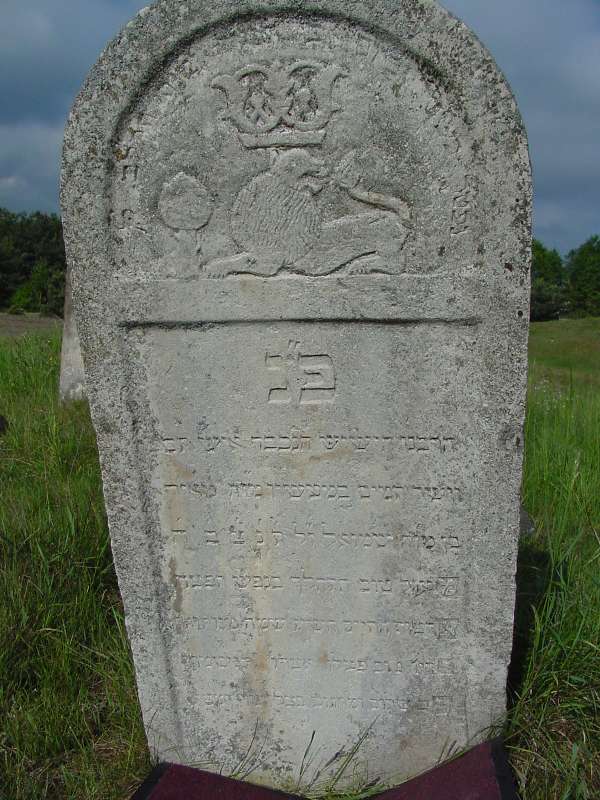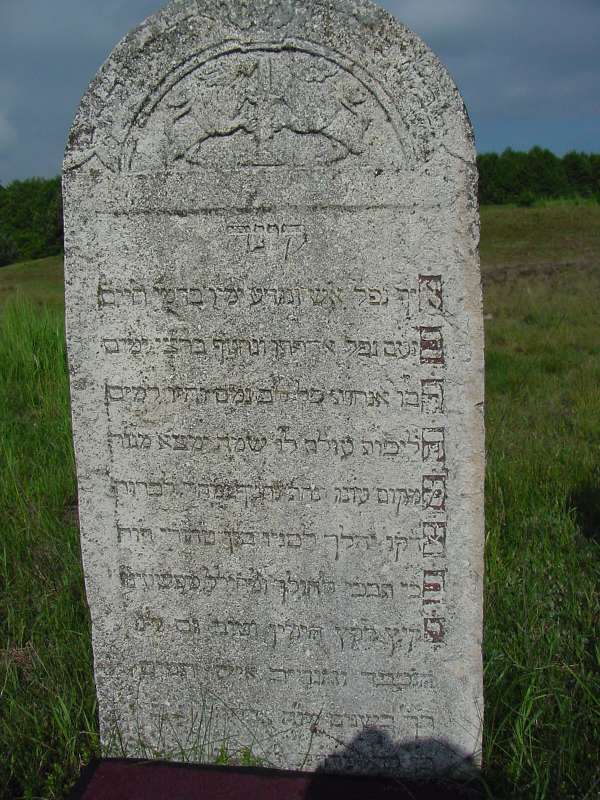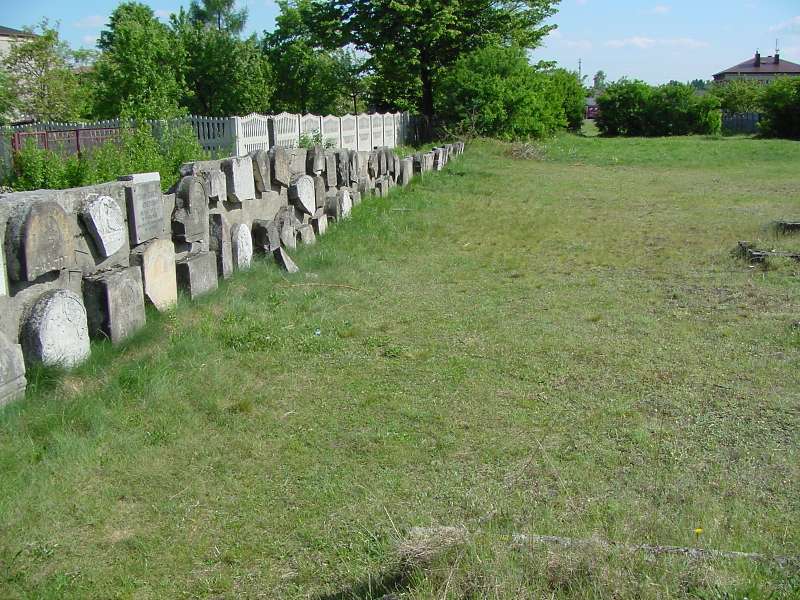 Alternate names: Żarki [Pol], Zharki [זשאַרקי -Yid, Жарки-Rus], Zarki [Ger], Zharik, Zhurik. 50°38' N, 19°23' E, 45 miles NNW of Kraków, 23 miles NNE of Będzin, 16 miles SE of Częstochowa. Jewish population: 1,544 (in 1857), 2,536 (in 1921). Yizkor: Kehilat Zarki; ayara be-hayeha u-ve-khilyona. (Tel Aviv, 1959).
Alternate names: Żarki [Pol], Zharki [זשאַרקי -Yid, Жарки-Rus], Zarki [Ger], Zharik, Zhurik. 50°38' N, 19°23' E, 45 miles NNW of Kraków, 23 miles NNE of Będzin, 16 miles SE of Częstochowa. Jewish population: 1,544 (in 1857), 2,536 (in 1921). Yizkor: Kehilat Zarki; ayara be-hayeha u-ve-khilyona. (Tel Aviv, 1959).
Gmina Żarki is an urban-rural administrative district in Myszków powiat, Silesian Voivodeship in S Poland with its seat in the town of Żarki, 7 km (4 mi) NE of Myszków and 50 km (31 mi) NE of the regional capital Katowice. The gmina 2006 total population is 8,138 (4,419 in the town). Beside the town of Żarki, Gmina Żarki contains the villages and settlements of Czatachowa, Jaroszów, Jaworznik, Kotowice, Masłoniowizna, Ostrów, Przybynów, Skrobaczowizna, Suliszowice, Wysoka Lelowska, Zaborze and Zawada. [July 2009]
Photos including individual gravestones. Information about the cemetery and town with photos. Map and photos link. Photos link. History link. Nothing remains of the first Jewish cemetery, but in Górki Street was the second, the Old Kirkut that existed until the third cemetery was started in Polna Street in 1821. The only fragment of the Old Kirkut is a large yard that probably hides some tombstones. The Jewish cemeteries and burial preparation buildings were situated 50 ells (about 25 meters) from the nearest houses. [October 2010]
Information about the third cemetery (Polna Street): "... one of the biggest and most interesting Jewish cemeteries .... started in 1821 year as the third kirkut in Zarki and its area reached 1,5 ha. In 1983 - 1985 nearly 900 graves were catalogued there. The cemetery was partially renovated and tidied thanks to Eli Zborowski who was born in Zarki and who is the leader of American and International Societies for Yad Vashem. In 2004 year the inhabitants of Zarki, the Local Authority and Eli Zborowski asked the Department of Judaism of Jagiellonian University to make an academic kirkut cataloguing and publish it as a book. ... preserved about 700 graves so we can see some standing and fallen tombstones (stelle-macewy), tombs and framed graves and the remains of obelisks. ... made of sandstone, limestone, granite and concrete, however, there are not preserved any cast-iron graves. On some tombstones, we can see very rare symbols (8- and 12-armed stars), ornaments and letter patterns. There are also several unique Hebrew-Polish inscriptions or inscriptions which include Arabic dates. The history of the Jewish cemetery is also connected with litigation. In 1836 there was a disagreement between the Paulite monastery prior and the synagogue supervisors concerning the project of building a brick wall around the cemetery. The Jews were convinced that their cemetery was started on the manorial ground with the permission of the town owner. The prior proved that the Jewish were buried in the monastery ground as a result the Jews committed themselves to pay for using the cemetery. However, when they relinquished paying in 1847 - 1858, the case was brought to the court and it was won by the Paulites." [October 2010]
US Commission Report No. AS 209
Alternate Yiddish name: Z'shorek. The town is located in Czestochowa province at 19º22, 50º38', 40 km from Czestochowa. Cemetery: Polna St. Present town population is 1,000-5,000 with no Jews.
- Local: Urzad Miasta i Gminy, ul. Kosciuszki 15, tel. 36.
- Regional: Wojewodzki Konserwator Zabytkow, Aleksender Broda, 47-217 Czestochowa, ul. Domegelskich 2 tel. 49-745
The earliest known Jewish community was 17th century. 1921 Jewish population was 2536. Orthodox Jews were buried in this cemetery. Landmark: (A-416/87). The isolated suburban flat land has a plaque in Polish mentioning Jews. Reached by turning directly off a public road, access is open to all with no wall or gate. 500 to 5,000 gravestones, most in original location with 20-100 stones moved but in cemetery and less than 25% toppled or are broken, date from 1840-20th century. The cemetery is not divided into special sections. The limestone and sandstone rough stones or boulders, flat shaped stones, finely smoothed and inscribed stones or flat stones with carved relief decoration have Hebrew inscriptions. There are no known mass graves. The municipality owns property used only as a Jewish cemetery. Adjacent property is residential or "useless." The cemetery is the same size as it was before the war. Occasionally, local residents visit. The cemetery has been vandalized occasionally. Jewish individuals abroad re-erected or patched stones and cleared vegetation about 1982-1985. There is currently no care. Serious threats include security and vandalism. Stones have been stolen from time to time.
Jan Pawel Woronczak, Sandomierska Str. 21m.1, 02-567 Warszawa; tel.49- 54-62 completed survey. He visited in 1986.
Czestochowa. Source: Gruber, Ruth Ellen. Jewish Heritage Travel A Guide to East-Central Europe . New York: John Wiley & Sons, Inc., 1992. p. 79
MASS GRAVE: On 6 October 1942, about 300 people of Jewish origin were executed by the Nazis at the Jewish cemetery. [October 2010]
Surnames in Czestochowa-Radomsko Area Research Group records for Żarki, but NO BURIAL INFORMATION. [August 2005]
Photos courtesy of CRARG



